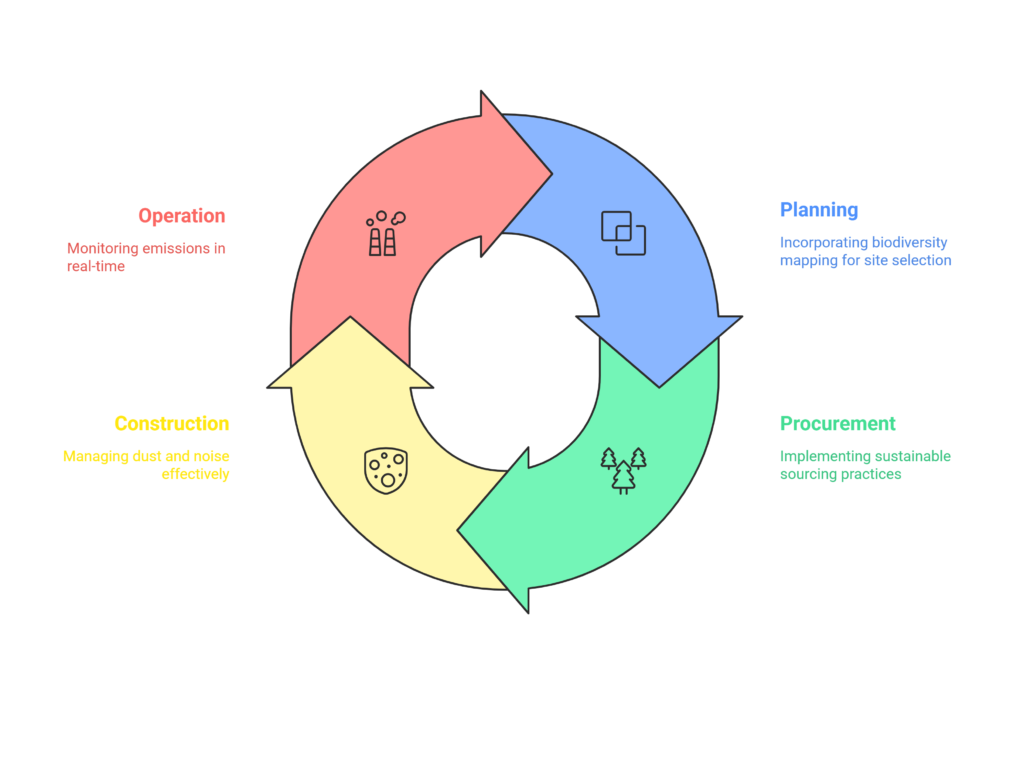The Rise of ESG in India’s Renewable Energy Projects
As India strides toward a clean energy future, the convergence of Environmental, Social, and Governance (ESG) principles with renewable energy development is reshaping how projects are conceived, financed, and executed. With climate change intensifying and global investors pivoting toward sustainable portfolios, ESG is no longer a buzzword—it is a strategic imperative.
This blog article explores how ESG is becoming central to India’s renewable energy projects, the impact it’s having on the ground, and the path forward in aligning sustainability with development.
Understanding ESG in the Renewable Energy Context
ESG refers to the three key criteria used to evaluate the sustainability and ethical impact of an investment or business decision:
- Environmental (E): Climate impact, resource usage, biodiversity, waste management.
- Social (S): Labor practices, human rights, community engagement, equity.
- Governance (G): Leadership transparency, business ethics, shareholder rights, compliance.

In the renewable energy sector, integrating ESG means going beyond carbon neutrality—it entails building projects that are socially inclusive, environmentally responsible, and governed by strong ethical frameworks.
India has set an ambitious renewable energy target of 500 GW by 2030, as announced at COP26 in Glasgow. As of January 2025, India’s total non-fossil fuel-based energy capacity has reached 217.62 GW. ESG principles are now playing a pivotal role in shaping how these projects are developed and scaled.
Environmental Pillar: Green Energy with a Conscience

Renewable energy inherently aligns with the environmental dimension of ESG. Yet ensuring environmental sustainability within clean energy projects requires looking at the entire lifecycle of development.
1. Land Use and Biodiversity
Solar and wind farms often require large tracts of land. Projects in states like Rajasthan and Gujarat have raised concerns over displacement of wildlife and degradation of fragile ecosystems. For instance, the critically endangered Great Indian Bustard faces threats from overhead power lines near wind and solar farms. Developers are increasingly conducting rigorous environmental impact assessments (EIAs) and adopting mitigation strategies like underground cabling or green corridors.
2. Resource Management and Circular Economy
The manufacturing processes for solar panels, batteries, and wind turbines are resource-intensive and generate significant e-waste. According to the International Renewable Energy Agency (IRENA), India could generate up to 1.8 million tonnes of solar e-waste by 20502. Addressing this challenge requires investment in recycling infrastructure and circular economy practices such as reusing components and cleaner production methods.
Social Pillar: Powering People Alongside Progress

While renewable energy is environmentally sound, its social impacts can be profound and complex.
1. Employment and Skill Development
India’s renewable energy sector created over 100,000 direct jobs between 2017–2022. With supportive policies, this number could grow to 1 million by 2030, according to estimates by the Council on Energy, Environment and Water (CEEW). Rooftop solar installations alone offer localized employment opportunities but require technical training programs to equip workers with necessary skills.
Some large companies have also launched training centers across rural India to empower youth and women with installation and maintenance expertise.
2. Land Rights and Community Engagement
Land acquisition remains a contentious issue in renewable energy projects. States like Madhya Pradesh have witnessed resistance from local communities over inadequate compensation or disruption to farming patterns. Developers are increasingly adopting protocols such as Free, Prior and Informed Consent (FPIC) to engage communities early in project lifecycles.
3. Equity and Inclusion
Gender diversity in clean energy workplaces is gaining attention. Programs like “Powering Livelihoods” empower women entrepreneurs by providing access to solar-powered livelihood tools in rural areas. These initiatives align closely with the social dimension of ESG.
Governance Pillar: The Backbone of Sustainable Growth

Transparent governance mechanisms ensure that renewable energy projects are accountable, resilient, and aligned with long-term societal goals.
1. Ethical Business Practices
Energy companies are increasingly publishing detailed sustainability reports aligned with frameworks like GRI (Global Reporting Initiative) and TCFD (Task Force on Climate-related Financial Disclosures).
2. Anti-Corruption Measures
The renewable sector is vulnerable to opaque contracting practices during public tenders. Developers are implementing third-party audits and whistleblower mechanisms to improve transparency.
ESG Across the Project Lifecycle
ESG principles are embedded across every stage of project development:
- Planning: Site selection using biodiversity mapping
- Procurement: Sustainable sourcing practices
- Construction: Dust/noise management protocols
- Operation: Real-time emissions monitoring using IoT sensors

Digital tools such as geospatial analysis are aiding compliance efforts throughout project lifecycles.
Government Support for ESG Integration
India’s regulatory framework is evolving to support ESG adoption:
- SEBI’s BRSR (Business Responsibility & Sustainability Reporting) mandates ESG disclosures for top-listed companies starting FY2023.
- The National Green Hydrogen Mission emphasizes ESG-aligned production goals.
- Sovereign green bonds worth ₹16,000 crore were issued in 2023 under ESG norms.
ESG-Driven Financing Trends
Investors are increasingly using ESG metrics as filters for evaluating returns on clean energy projects. In 2023 alone, India attracted over $12 billion in clean energy investments from global funds focused on sustainability. For example – Development banks like AIIB offer concessional loans tied to gender inclusion metrics.
Challenges on the ESG Path
Despite progress in integrating ESG principles into renewable energy projects:
- Greenwashing remains a concern where superficial claims lack actual impact. It is often used as a marketing tactic to capitalize on the growing demand for environmentally friendly practices and products without making genuine efforts to reduce environmental impact.
- Smaller developers struggle due to limited resources for robust ESG implementation.
- Social conflicts over land rights continue to delay projects.
Conclusion: The Road Ahead
The rise of ESG in India’s renewable energy sector represents a transformation rather than just a trend. By embedding sustainability into every stage—from planning to financing—India is positioning itself as a global leader in responsible clean energy development.
For this momentum to sustain itself long-term, ESG must evolve from being a compliance requirement into a core commitment shaping how we power our homes, industries, and nation.
www.hexaclimate.com – Your Net-Zero Partner!
Sources:
- https://l1nq.com/VlAy7
- https://encr.pw/P1yVt
- https://encr.pw/kehqU
- https://encr.pw/0KZZ6
- https://encr.pw/CiQ7c
- https://encr.pw/7Z9J9
- https://l1nq.com/IIpa8
